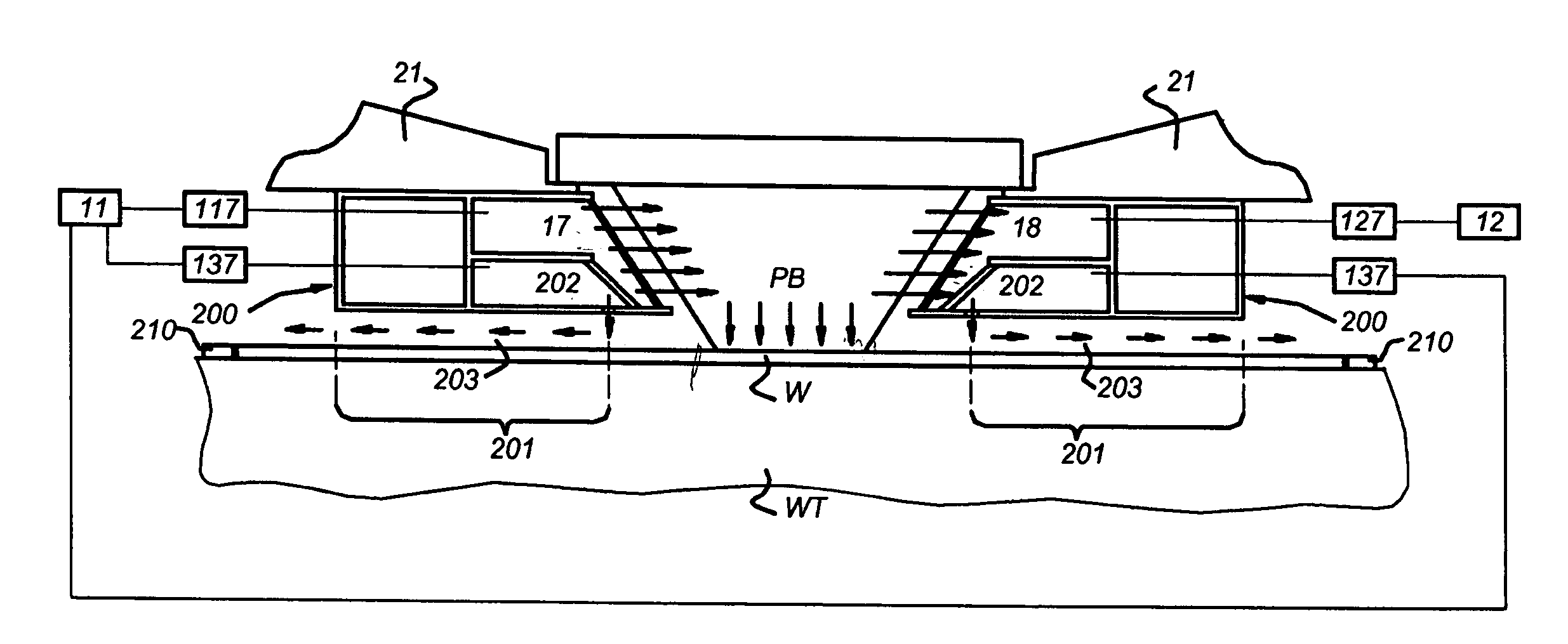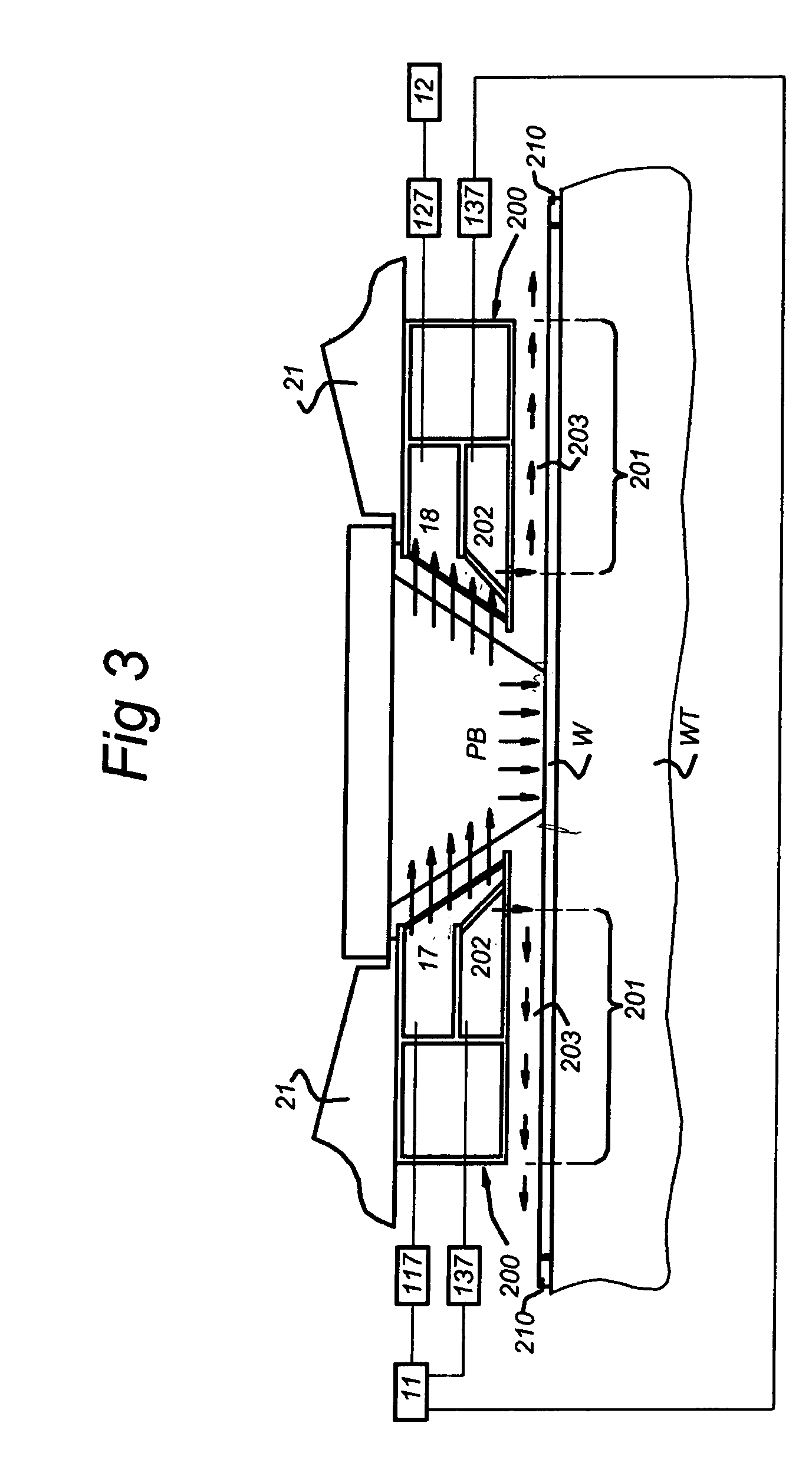Lithographic apparatus comprising a gas flushing system
a technology of lithographic projection and flushing system, which is applied in the direction of electrical apparatus, printers, instruments, etc., can solve the problems of excessive operating costs, unacceptable intensity loss, and gas introduced inside the hood may leak to the outside, so as to reduce water and reduce transmission loss
- Summary
- Abstract
- Description
- Claims
- Application Information
AI Technical Summary
Benefits of technology
Problems solved by technology
Method used
Image
Examples
Embodiment Construction
[0060]FIG. 1 schematically depicts a lithographic projection apparatus 1 according to a particular embodiment of the invention. The apparatus includes:[0061]a radiation system including a radiation source LA, a beam expander Ex, and an illumination system IL, configured to supply a projection beam PB of radiation (e.g. 157 nm radiation);[0062]a first object table (mask table) MT provided with a mask holder and configured to hold a mask MA (e.g. a reticle), and connected to first positioning device PM that is configured to accurately position the mask with respect to item PL;[0063]a second object table (substrate table or substrate support) WT provided with a substrate holder and configured to hold a substrate W (e.g. a resist-coated silicon wafer), and connected to second positioning device PW that is configured to accurately position the substrate with respect to item PL; and[0064]a projection system (“lens”) PL (e.g. refractive, catadioptric or reflective optics) constructed and a...
PUM
| Property | Measurement | Unit |
|---|---|---|
| length | aaaaa | aaaaa |
| length | aaaaa | aaaaa |
| length | aaaaa | aaaaa |
Abstract
Description
Claims
Application Information
 Login to View More
Login to View More - R&D
- Intellectual Property
- Life Sciences
- Materials
- Tech Scout
- Unparalleled Data Quality
- Higher Quality Content
- 60% Fewer Hallucinations
Browse by: Latest US Patents, China's latest patents, Technical Efficacy Thesaurus, Application Domain, Technology Topic, Popular Technical Reports.
© 2025 PatSnap. All rights reserved.Legal|Privacy policy|Modern Slavery Act Transparency Statement|Sitemap|About US| Contact US: help@patsnap.com



